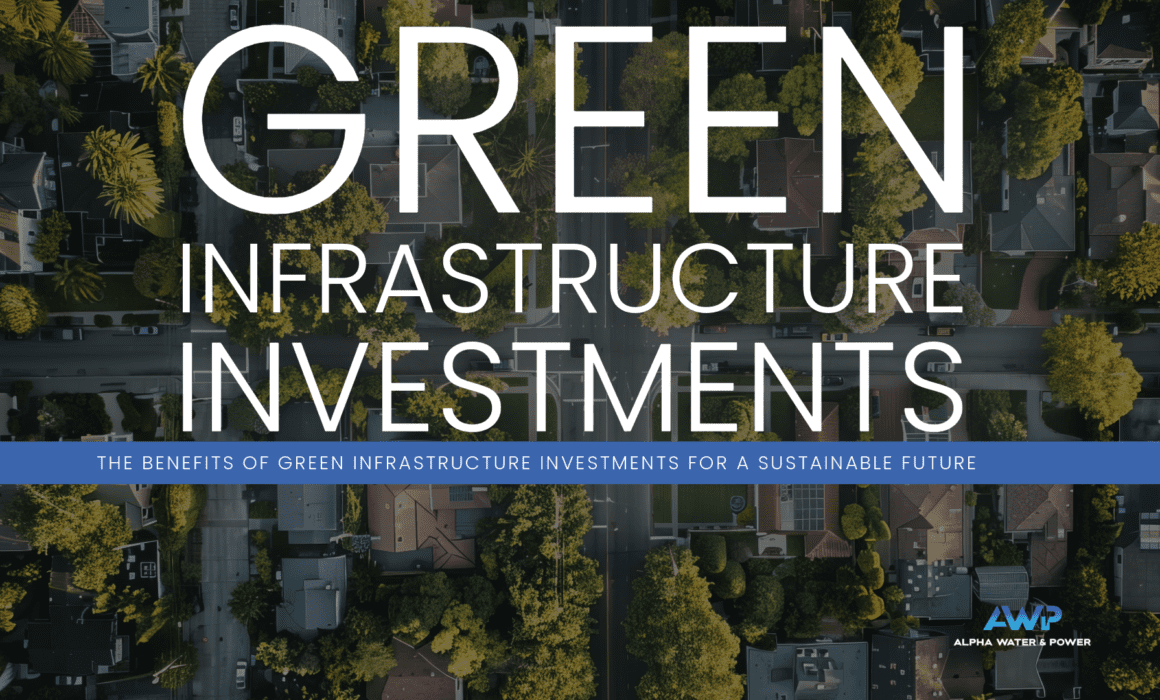The Benefits of Green Infrastructure Investments in Urban Planning – EARTH.ORG
Green infrastructure is a game-changer for our cities and communities. It is all about using nature to make our urban areas better for everyone. Instead of just building things the usual way, green infrastructure taps into the natural world to create a sustainable and greener way of living. It is not just good for the environment; it is good for us, too. By adding more nature into our cities, we can tackle issues like pollution and climate change, make our neighbourhoods more pleasant, and boost our overall quality of life. In a world where cities are getting bigger and we are worried about our planet, green infrastructure is like a roadmap to a brighter and more prosperous future.
—
Green infrastructure (GI) plays a crucial role in urban planning by enhancing environmental sustainability, improving community well-being, and creating more liveable cities through the integration of natural elements, such as parks and green spaces, into urban landscapes. It helps mitigate the adverse effects of urbanisation, supports biodiversity, promotes social inclusiveness, and contributes to overall urban resilience and quality of life.
According to a 2018 study, urban GI is the creative combination of natural and artificial (green + grey + blue) structures intended to achieve specific resilience goals (flood/drought management, public health, etc.) with broad public support and attention to the principle of appropriate technology.
Investing in green infrastructure in urban areas offers significant environmental benefits, which make GI investments a valuable strategy for sustainable and resilient urban planning. First, GI projects like permeable pavements and green roofs can effectively manage stormwater by absorbing and filtering rainwater. This reduces the risk of flooding, prevents water pollution, and helps maintain healthier aquatic ecosystems. Second, GI initiatives introduce more green spaces into cities, promoting urban biodiversity by providing habitats for various species. This supports urban wildlife conservation efforts and enhances overall ecological balance. Third, GI contributes to climate resilience by mitigating the urban heat island effect. The presence of green infrastructure provides shade and cooling effects, reducing energy consumption for air conditioning and improving overall urban climate comfort.
GI offers a range of social and health benefits to urban residents. Firstly, it can have a positive impact on mental health by providing urban dwellers with access to green spaces, parks, and natural environments. These accessible green areas can help reduce feelings of stress, anxiety, and depression among urban residents. Secondly, green infrastructure promotes physical health by offering opportunities for activities like walking, jogging, and recreational pursuits within urban spaces. These activities contribute to lower rates of obesity and related health problems. Thirdly, green infrastructure plays a crucial role in creating communal areas where residents can interact, socialise, and develop stronger community bonds. These communal spaces often serve as venues for gatherings, events, and neighbourhood activities, fostering a sense of unity among urban dwellers.
Investing in GI brings a variety of economic benefits. First, strategically placing green elements such as trees and green roofs would lower energy consumption by providing shade and insulation to buildings. This means cost savings on utility bills. Second, green infrastructure leads to better public health, which translates to lower healthcare costs for individuals and governments. It also raises property values when well-maintained, contributing to higher tax revenue for local governments. Green spaces attract visitors, benefiting local businesses and the economy. These projects create jobs in various fields such as landscaping and urban planning. Moreover, it helps manage stormwater naturally, reducing the need for expensive traditional infrastructure. Lastly, access to green spaces during breaks can boost worker productivity and job satisfaction, benefiting employers and the economy as a whole.
Implementing GI in urban planning faces several challenges. First, there is often a lack of explicit focus on justice in green infrastructure criteria, making it difficult to secure funding for projects benefiting marginalised communities. Advocating for dedicated funding for justice-focused green infrastructure initiatives can help. Second, technocratic criteria, like stormwater management, often take precedence over community needs, leading to conflicts. To tackle this, planners should find a balance between technical requirements and community priorities in policies. Passive community engagement, relying on existing complaints, can cause resistance when GI projects don’t align with local needs. Shifting to more active community involvement, starting from project inception and resolving conflicts clearly, is vital. Funding disparities, favouring wealthier areas, present challenges. Exploring innovative financing methods and advocating for equitable policies can address this issue. Third, aligning green infrastructure policies with broader urban goals, especially in transportation and land use, can be complex. Planners should work on cohesive strategies that integrate green infrastructure seamlessly into urban development plans. These steps can help overcome barriers to green infrastructure implementation.
To effectively implement green infrastructure in urban planning, policymakers and urban planners should prioritise the integration of green principles into city planning and zoning regulations. This involves revising existing policies or creating new ones that mandate green space inclusion, multi-functionality, and connectivity in urban development plans.
Simultaneously, securing funding and community support is crucial for project success. Policymakers should explore diverse funding avenues, such as public-private partnerships, grants, and incentives for green development, while engaging with the community through town hall meetings and awareness campaigns. Providing tax incentives for businesses and homeowners investing in green infrastructure can further encourage participation and financial support.
Green infrastructure is a powerful tool for urban planning, providing solutions for environmental, social, and economic urban challenges. By incorporating nature into our cities, we can create more sustainable and resilient communities.
GI offers environmental benefits like managing stormwater, supporting biodiversity, and mitigating urban heat. It also improves the well-being of city residents by enhancing mental and physical health and fostering a sense of community.

